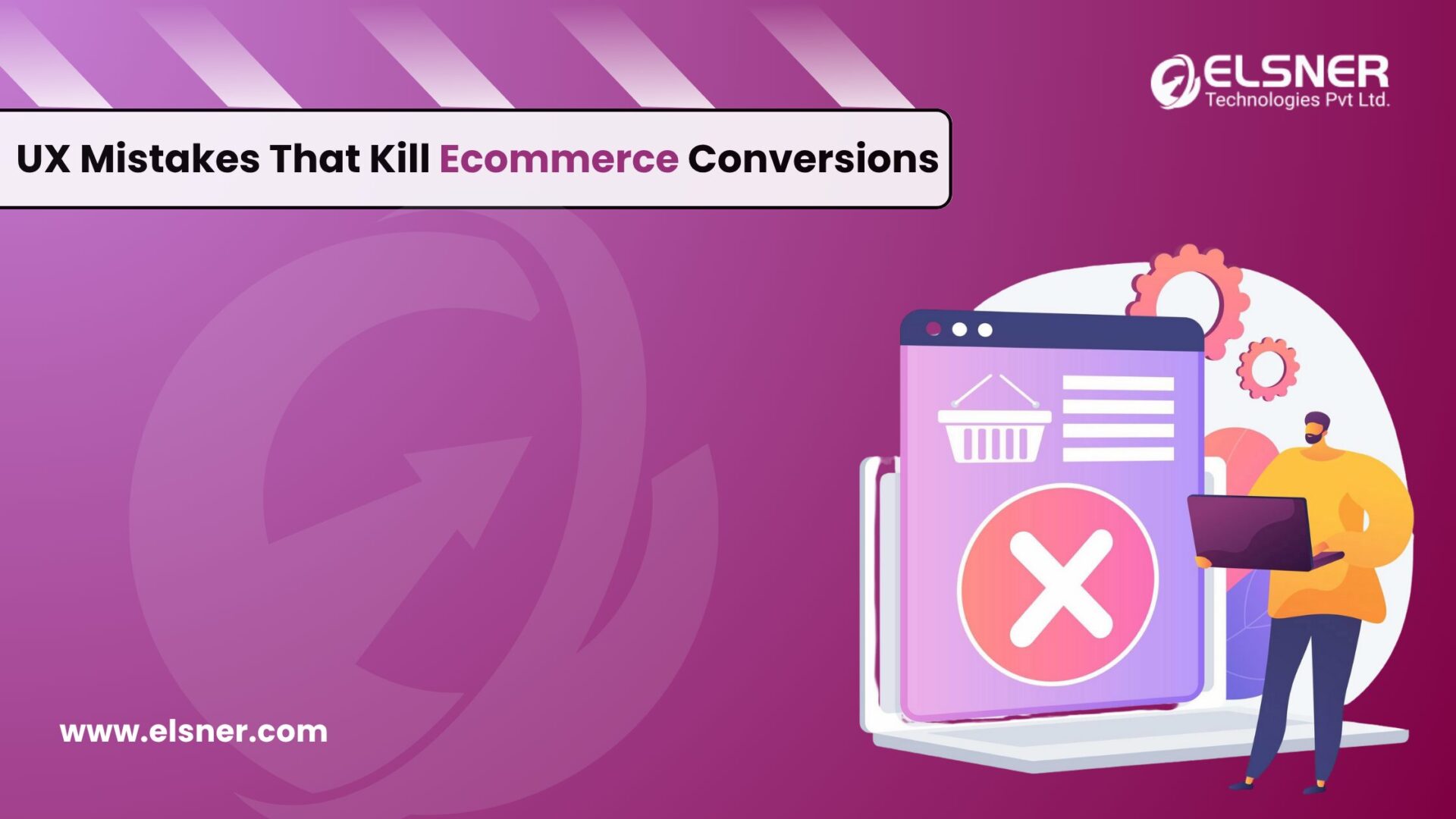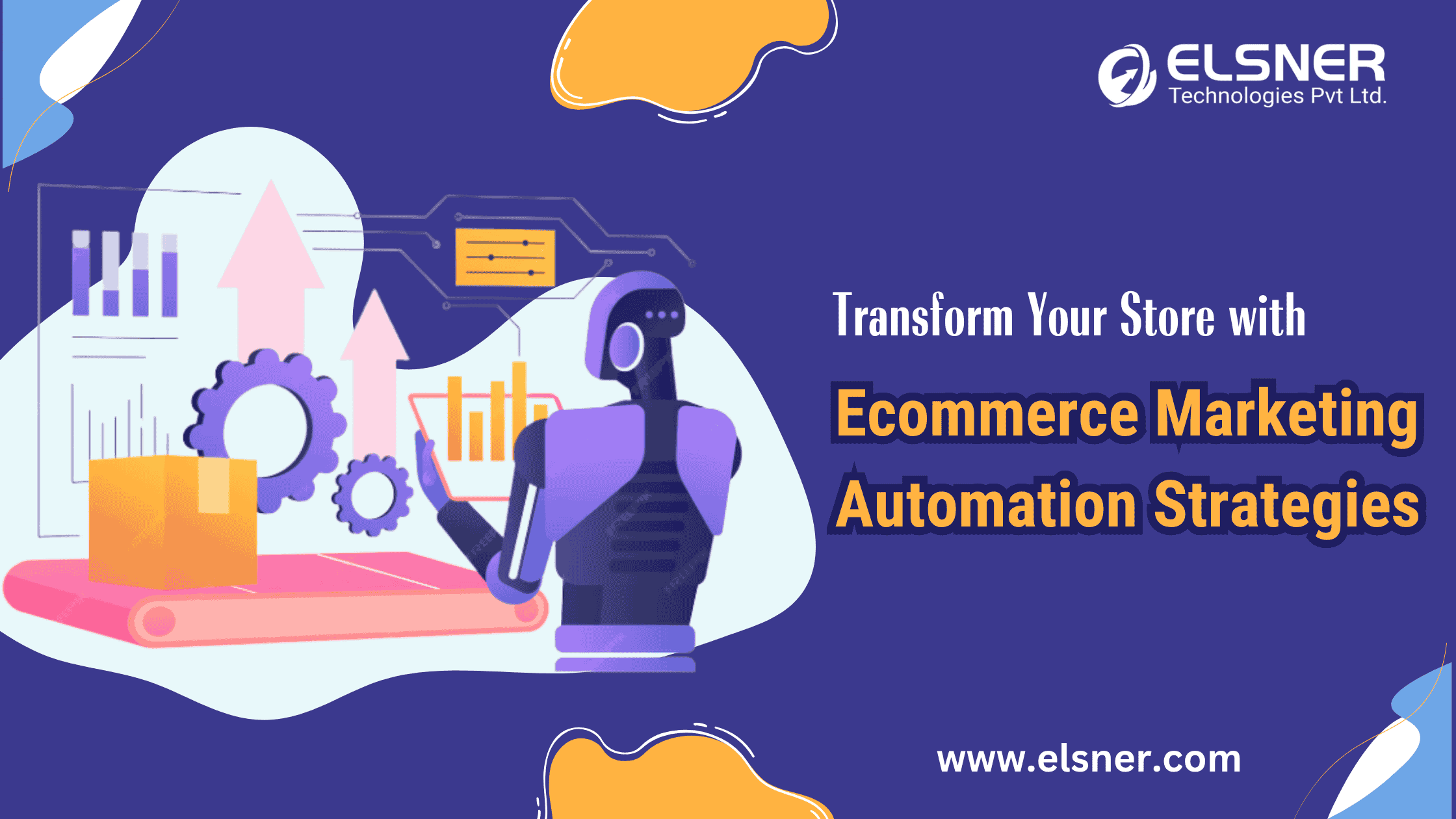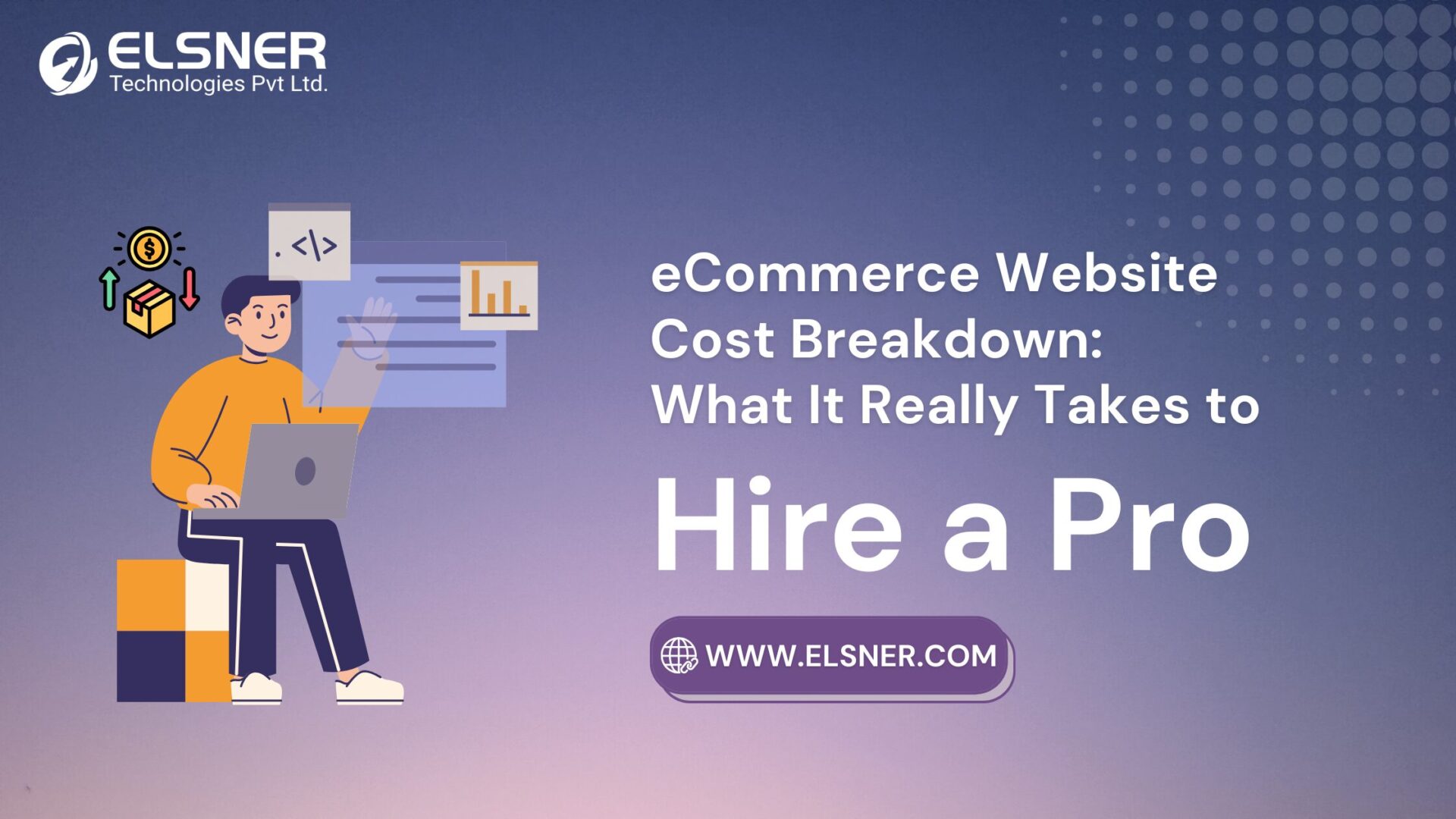- Why UX Is Your Silent Conversion Killer?
- The Hidden Cost of Poor Design
- 7 UX Design Mistakes And How You Can Solve Them With The Help Of Ecommerce Development Services
- Cluttered Interfaces and Overloaded Product Pages
- The Problem That Overwhelms Shoppers
- The Fix: Embrace Minimalist Design Principles
- Confusing Navigation
- When Site Structure Becomes a Maze
- Building Navigation That Converts
- Slow Load Times = Dead Conversions
- The Speed Trap That Kills Sales
- Speed Optimization That Actually Works
- Let’s Fix Your eCommerce Conversions
- Poor Mobile UX That Alienates Half Your Users
- The Mobile-First Reality
- Creating Mobile Experiences That Convert
- Inconsistent Checkout Experience
- Where Sales Drop
- Streamlining the Path to Purchase
- No Trust Signals or Microcopy Cues
- The Trust Deficit Problem
- Building Confidence Through Design
- Ignoring UX in Enterprise B2B eCommerce
- The B2B UX Misconception
- Designing for Business Buyer Needs
- Stop Bleeding Conversions—Fix UX Now
- The Business Case for Better UX
- What Success Looks Like
- Wrapping Up
- FAQs
- Why is UX important in ecommerce website development?
- What’s the most common UX mistake in ecommerce?
- How can a professional ecommerce development company help?
An online customer comes to your store and is ready to make a purchase. But the slow loading pages, confusing navigation, and broken buttons don’t work properly on mobile phones.
The result? Within seconds, frustration sets in. The customer leaves. No purchase. No second chance. In such scenarios, your competitors make a profit. This happens millions of times every day. Real businesses lose real money because of preventable UX mistakes.
This guide will talk about the most common user experience mistakes that businesses make and how an ecommerce development company can help you overcome those.
Why UX Is Your Silent Conversion Killer?
Many business owners think UX in ecommerce website development is just about making things “look pretty.” Wrong. User experience design directly impacts revenue. Every click, scroll, and tap either moves customers toward purchase or pushes them away.
Amazon Web Services research shows a harsh reality:
- 88% of users never return after a bad website experience
- Poor UX directly kills conversions
- Simple design fixes can save thousands in lost sales
The right ecommerce development company understands this connection. They recognize three key truths:
- Good UX increases customer satisfaction
- Better design reduces bounce rates
- Optimized experiences boost lifetime value
The Hidden Cost of Poor Design
Every friction point bleeds money. Customers struggle with:
- Product search that doesn’t work
- Check out the flows that confuse
- Mobile experiences that frustrate
- Trust signals that don’t exist
These problems compound—higher customer acquisition costs, lower conversion rates, and reduced customer lifetime value. An effective Ecommerce Sales Dropping Solution can turn things around when you partner with the right ecommerce developers.
7 UX Design Mistakes And How You Can Solve Them With The Help Of Ecommerce Development Services
Cluttered Interfaces and Overloaded Product Pages
The Problem That Overwhelms Shoppers
Too many elements competing for attention creates decision paralysis and cognitive overload. Shoppers can’t process information with
- excessive text,
- multiple CTAs, and
- competing visual elements.
This visual chaos leads to:
- Reduced session duration as users feel overwhelmed
- Higher bounce rates when pages feel confusing
- Lower conversion rates due to decision paralysis
The Fix: Embrace Minimalist Design Principles
- Strategic whitespace becomes your best friend.
- Clean layouts guide user attention naturally toward key conversion elements.
- Visual hierarchy helps shoppers understand product value propositions without strain.
An experienced ecommerce development agency often audits pages by removing unnecessary elements first.
Pro tip: Test different layout variations with heatmap analytics. Real user behavior data reveals which designs actually drive conversions versus what looks aesthetically pleasing.
Confusing Navigation
When Site Structure Becomes a Maze
Poor navigation architecture kills product discovery before it starts. Hidden category filters, unclear menu structures, and navigation dead ends frustrate users who want to browse efficiently.
Shoppers abandon searches when they can’t find relevant products quickly. The impact hits hard:
- Abandoned browsing sessions increase dramatically
- Product discovery rates drop as users give up
- Return visit likelihood decreases significantly
Building Navigation That Converts
- Breadcrumb trails help users maintain context while exploring different product categories.
- Intelligent filtering systems let shoppers narrow choices without confusion.
Seasoned ecommerce developers structure site maps based on actual user behavior data. They create logical product hierarchies that match how customers naturally think about purchases.
Implementation strategy: Use analytics to identify common user paths. Build navigation with the help of an ecommerce development agency that supports these natural browsing patterns rather than forcing artificial category structures. Learn from eCommerce Success Stories to guide your approach and avoid common pitfalls.
Slow Load Times = Dead Conversions
The Speed Trap That Kills Sales
Website performance directly impacts revenue in measurable ways. Research demonstrates that each additional second of load time reduces conversions by 7%. Mobile users prove even less patient with loading delays.
Unoptimized images and bloated JavaScript files create the biggest speed bottlenecks. Many sites sacrifice performance for visual appeal without realizing the conversion cost.
Speed Optimization That Actually Works
Technical optimization requires systematic approaches.
- Lazy loading techniques prevent unnecessary resource consumption on initial page loads.
- Code minification reduces file sizes without affecting functionality.
- Content delivery networks distribute assets geographically for faster access.
Professional ecommerce website development services prioritize Core Web Vitals compliance from project inception. They build speed optimization into the foundation.
Measurement matters: Use Google PageSpeed Insights and real user monitoring tools. Track performance metrics alongside conversion data to understand the direct business impact.
Let’s Fix Your eCommerce Conversions
Ready to fix your sales slump? Contact Us to connect with our expert eCommerce team and get a tailored solution today.
Poor Mobile UX That Alienates Half Your Users
The Mobile-First Reality
Mobile cart abandonment rates exceed 80% partly due to poor mobile UX design. Shoppers struggle with tiny buttons, unclear forms, and checkout flows optimized for mouse interaction rather than finger taps.
Creating Mobile Experiences That Convert
- Touch-friendly CTAs need adequate spacing and size for easy tapping.
- Sticky navigation headers keep important functions accessible during scrolling.
Enterprise B2B ecommerce projects increasingly demand mobile optimization from day one. Business buyers use mobile devices for research and initial vendor evaluation, making mobile UX crucial for B2B success.
Design principle: Test all interactions with actual fingers on real devices. Simulator testing misses important usability issues.
Inconsistent Checkout Experience
Where Sales Drop
The final moments before purchase become critical conversion points. Strong eCommerce Marketing Sales strategies ensure users who’ve invested time browsing and selecting products don’t abandon carts due to a complicated or untrustworthy checkout process.
Streamlining the Path to Purchase
- Autofill functionality reduces form completion time significantly.
- Guest checkout options eliminate account creation barriers for first-time buyers.
- Clear progress indicators help users understand remaining steps.
Comprehensive ecommerce development services integrate payment processing and analytics solutions seamlessly. They design checkout flows that feel effortless while capturing necessary customer information.
Optimization approach: Use funnel analysis to identify specific abandonment points. Address the highest-impact friction areas first for maximum conversion improvement.
No Trust Signals or Microcopy Cues
The Trust Deficit Problem
Online shoppers need reassurance before making purchase commitments. Missing customer reviews, poor microcopy, and generic CTAs fail to address common purchase hesitations.
Contextual information gaps leave customers guessing about shipping times, return policies, and product availability.
Building Confidence Through Design
- Strategic trust badges and social proof elements address specific customer concerns.
- Well-crafted microcopy provides reassurance at critical decision points.
- Contextual nudges like “Ships in 24 hours” create urgency while building confidence.
- Case studies show how small trust signal improvements generate significant conversion lifts.
Trust-building strategy: Address customer objections proactively through strategic microcopy placement. Use real customer feedback to identify common concerns worth addressing.
Ignoring UX in Enterprise B2B eCommerce
The B2B UX Misconception
Many companies assume enterprise B2B ecommerce buyers accept clunky interfaces because purchases involve higher consideration periods. This assumption costs businesses significant revenue opportunities.
Enterprise B2B ecommerce users expect consumer-grade experiences even for complex procurement processes.
Poor B2B UX leads to:
- Lost bulk order opportunities
- Reduced buyer loyalty and repeat purchases
- Longer sales cycles due to interface friction
Designing for Business Buyer Needs
- Smart bulk ordering interfaces accommodate different purchase patterns.
- Role-based dashboards provide relevant information for different user types.
- Streamlined reorder flows make repeat purchases effortless.
Insights from experienced ecommerce development companies help create B2B-specific user journeys. They understand how business buying processes differ from consumer purchases and design accordingly. To get tailored solutions, connect with eCommerce team that understands the B2B landscape.
B2B optimization focus: Create approval workflows, budget tracking features, and multi-user account management that match actual business purchase processes.
Stop Bleeding Conversions—Fix UX Now
The evidence is clear. Poor UX destroys profit margins.
Smart companies take action. They fix conversion killers before losing more customers.
The Business Case for Better UX
Numbers speak louder than opinions:
- Higher conversion rates from optimized experiences
- Lower customer acquisition costs through improved retention
- Increased lifetime value from satisfied customers
- Better brand reputation through positive user experiences
What Success Looks Like
Companies that prioritize UX see real results:
- Faster page speeds reduce bounce rates
- Clearer navigation increases product discovery
- Streamlined checkout flows boost completion rates
- Mobile optimization captures more sales
Wrapping Up
Professional ecommerce development services understand conversion psychology. They know which design elements actually impact sales. Most importantly, they implement changes that generate measurable results.
Partner with an Ecommerce web Developer or an eCommerce website development company that puts conversions first. Choose developers who understand that great UX isn’t optional—it’s essential for business success.
FAQs
Why is UX important in ecommerce website development?
UX directly affects how users navigate, shop, and complete purchases on your website. Every interaction either moves users closer to conversion or creates friction that leads to abandonment. Good UX design removes barriers while poor UX creates obstacles that cost sales.
What’s the most common UX mistake in ecommerce?
Slow-loading websites with confusing checkout processes represent the most damaging UX mistakes. Speed issues frustrate users immediately, while checkout complexity prevents sales completion even after users invest time browsing products.
How can a professional ecommerce development company help?
A professional eCommerce website development company performs comprehensive UX audits to identify conversion barriers. They optimize website performance, create mobile-first responsive designs, and build scalable interfaces tailored to your specific user needs and business goals.

About Author
Dipak Patil - Delivery Head & Partner Manager
Dipak is known for his ability to seamlessly manage and deliver top-notch projects. With a strong emphasis on quality and customer satisfaction, he has built a reputation for fostering strong client relationships. His leadership and dedication have been instrumental in guiding teams towards success, ensuring timely and effective delivery of services.





